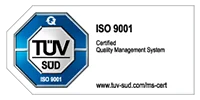- BlogStrategyTechnology How to develop a SaaS application




How to develop a SaaS application
How to Develop a SaaS application? Everything You Need to Know.
According to Forbes Magazine, projected revenue in 2022 for “Software as a Service” is $233 billion and is set to grow to $369.4 billion by 2024. These are big numbers that demonstrate the potential rewards for getting your SaaS product right, but what does it take to develop a successful SaaS application?
Why are Businesses Turning to SaaS Applications and Why SaaS Application Development is Needed?
There’s no denying the explosion in SaaS use and its potential to drive business success, but many businesses ask us whether SaaS is the right choice for them. Some distinguishing features of SaaS could make the option right for your business.
Cost:
Cost is always a major factor, both for the developer and user; developing a SaaS application can be a cheaper option because developers don’t need to purchase lots of new hardware or rent large spaces to house it in. For users, SaaS works on a subscription basis, with no large upfront costs, ongoing maintenance or upgrade costs and you only pay for what you use, letting you scale it up and down with your business. This makes SaaS applications accessible to more users.
Access:
When ease of access is important, SaaS applications need only a browser and internet connection and your software solution becomes accessible via a range of devices, anywhere in the world. This ease of access is also very important for users in terms of productivity and flexibility in a world where it is now necessary to be able to work from anywhere. No installation and easy login also save on time.
Flexibility:
Another key driver for adopting SaaS is the ease of maintaining and updating applications to ensure they remain a competitive product, so users don’t become disenfranchised by out-of-date products or compatibility issues and turn to competitors to give them a competitive advantage. Application development also gains by the way it can be tested during development and adapted through the deployment of a minimum viable product. This gives users confidence that they will have access to a user-friendly product.
Security:
Data security, a hot topic, is critical to businesses and individuals. Business is lost, reputations destroyed and hefty fines are levied on businesses that aren’t rigorous with their data security. Cloud providers go to great lengths to ensure the integrity of their data storage systems, so when data security is key, SaaS applications can offer strong solutions.
Reliability:
This is also true of reliability. SaaS applications aren’t affected by downtime if one server goes down; they can remain online. For delivering a good customer experience where downtime can’t be afforded, the global connection of servers enables a 24/7 service.
Cost, reliability, scalability, and access are all benefits for developers and users, can enhance productivity and address many complaints about technology raised by businesses and users, leading businesses to choose SaaS application alternatives.
Before Starting a SaaS Application development
SaaS applications offer many benefits, but as a developer, there will also be challenges to address. Perhaps the most complex will be making the product work for everyone – customers and employees alike. Each user will have their perception of what the app should deliver and how it should work. Addressing this challenge emphasises the importance of initial research into the product, and of having a development infrastructure and the skills needed to build and keep iterating on a clear understanding of product deliverables and consumer interaction with it.
Developers also need to consider what the application is to be used for SaaS Application development; the advantages of a SaaS model may not be relevant in all circumstances. If you’re developing software that will only be used rarely, it’s possible that this model won’t work for you. This is also the case if you’re developing for a niche or small group. It will be hard to get the volume of users needed to make a subscription model viable.
Also, be clear on your monetisation options. The burden of upgrades and maintenance will sit with the developer. How will you create a monetisation plan that makes it viable long-term whilst also managing the potential ups and downs in subscriber numbers, and how do you set an initial price point that attracts users to use a new product? There are many pricing options available but it’s important to get this right to drive product uptake.
The steps to developing a SaaS app
Having determined that SaaS is the right option for you, the Saas application development must be rigorous to ensure it lives up to its potential, and to your reputation. Some key decisions and development stages should be addressed:
1. Market Research:
Validating ideas by looking at what exists in the market, understanding how a subscription approach may be received, determining customer demands and defining what your USP will be by spotting gaps in the market
2. Define features and functionality:
What will you deliver to users, understanding priorities and building for the future
3. Design UI and UX:
Consider the user experience and effective ways of engagement, how this can be delivered and enhanced through the interface
4. Select a cloud service provider:
Needs to be reliable, able to scale, easy to access and with costs that make it a practical option. Security and reliability will also be essential
5. Select the technology stack:
Used to build and run your app, this will include tools for developing client-facing components and server-side development and a database for backend storage, etc.
6. Define the pricing strategy:
There are many options but it is important to define a model that allows for long-term sustainability and works with scale
7. Find a technology partner:
If it is not your intention to maintain the app long term you will need a partner for maintenance, to deliver updates and user support and they should also be able to provide tailored support and industry insight
8. Allow for third-party integration:
The product should seamlessly integrate with other tools and apps to ensure a wide appeal
9. Build an MVP:
To prove the concept, gain user insights and make changes in tech and features early in development.
SaaS application development is about continued iteration and development to remain competitive and drive user engagement. One of the key advantages of developing SaaS applications is the ease at which these products can be updated to remain relevant, in comparison to other options, and your development plan should reflect this ongoing process.
Sustainability through cyclical development
Good product development doesn’t just have a beginning and an endpoint. It’s a cyclical process, and a SaaS app is no exception because of the way it is maintained and updated through a cloud-based service. The Cloud lends itself to ensuring that an app is viable long-term and offers an ongoing development opportunity.
Our approach to SaaS application development is encapsulated by Incepteo’s four pillars: Idea, Build, Sustain, and Grow. This approach keeps products fresh and relevant in the marketplace and reflects the ongoing cycle of development that achieves long-term sustainability.
We work with our clients on each pillar, constantly looking to build for the future. Our build services provide world-class designs and enable our clients to select the right architecture for building a SaaS product within their budgets.
To sustain products, our customers receive support through our support desk with any queries and challenges they might have. Finally, our growth pillar ensures that as SaaS changes in concept, we follow trends and grow with them, passing on innovations to our clients.
Providing world-class services is what drives us and our clients, and the suitability of SaaS applications for accessibility to a wider client base and providing long-term, ongoing development to maintain relevance in the marketplace can generate lasting revenues.
At Incepteo we realise that this potential rests on a sound development process underpinned by a strong ethos of innovation and an understanding of the entrepreneur. Working with our clients on our four pillars in development creates market-leading businesses that are changing the market with SaaS.
Share this:
Recent Posts
By Sector

How Can Incepteo Help You?


Quick Links
AI SERVICES
2024 © All rights reserved by Incepteo

